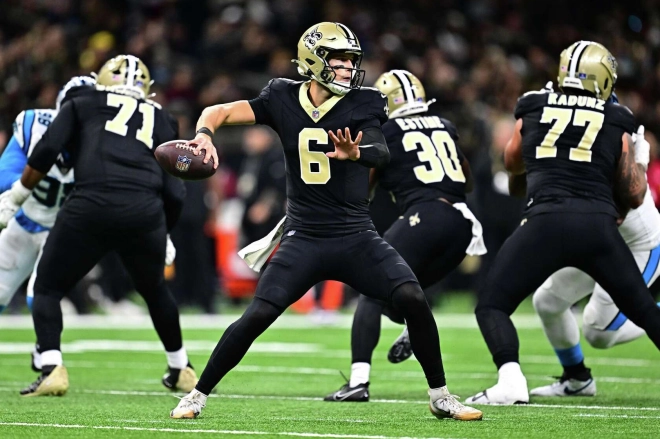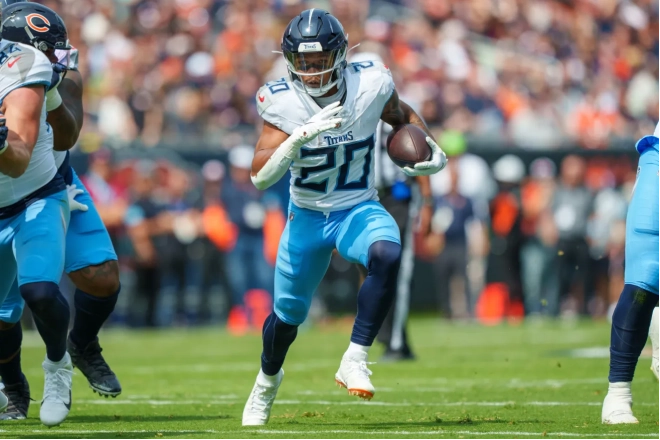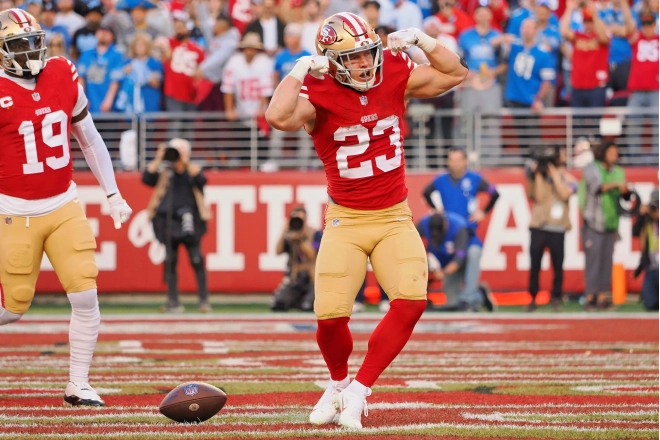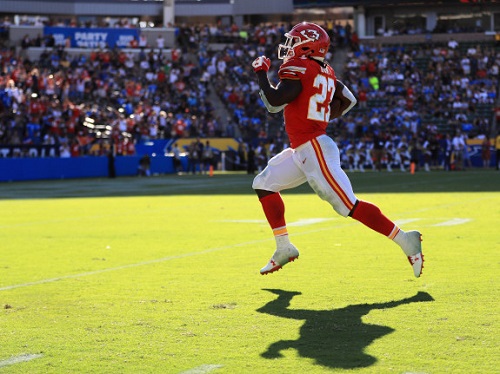Four weeks of the NFL season is now in the books. After four weeks, the rust from the offseason has worn off and we have a good feel of what teams are and what they are not. NFL teams have adjusted their strategies and we dynasty owners have done the same. Early injuries to David Johnson, Allen Robinson and Corey Coleman have shaken up fantasy rosters. After four weeks, it is time to look at your roster and honestly assess how the rest of the season will go. Are you playoff bound? Can you go deep into the playoffs? What is missing from your roster? How can it be fixed?
First, look at your results. Are you 4-0 or 0-4? The former puts you in a good position to make the playoffs. The latter is a steep hill to climb. Most of us are somewhere in between. However, it's not all about wins and losses but the quality of them that matters. If you have multiple losses by five points or fewer, especially in PPR formats, starting a different player could have meant the difference between a W or an L. If you are consistently winning by only a couple of points, your record may not be as strong as it appears. Most leagues have an all-play record. Where you rank against your entire league instead of your weekly opponent is a better indicator of team strength.
Now that games have been played, how are your players scoring? An average team will have one player in the top X of positional scoring where X equals the number of teams in your league. You should have two players in the top 2X of positional scoring. It may sound a little confusing, so let me give an example. In a 12-team league, I can expect to have one quarterback in the top 12 of scoring and two QBs in the top 24. The same is true for all my other positions. If your team barely meets those benchmarks, you have an average team that may make the playoffs, but it would take some luck to go deep into the postseason or win a championship.
We all want to win a championship. To do that, you need to be better than average. Review your team’s scoring settings. What positions benefit most from the settings? This is your premium position. Then see where your players compare to the rest of your league in scoring. In a 12-team example, a championship team should want two players in the top 12 if possible or three in the top 24 at all positions. If you have that, your team is strong. In our 12-team example, if you have five players in the overall top 30, you have some depth to cover for injuries. These numbers assume you have two starters at your premium position.
The most important thing for this premium position is that you want a player in the top half of the top X of the position (remember that X equals the number of teams in your league). In our example, the top six. Normally, the premium position is either wide receiver or running back. Whichever positions are not your premium positions you at least want average depth so you can play the matchups. You should want a top-three or top-four overall option at either QB or TE to give you an advantage at that position. If you have flex positions in your league, fill them with a top-24 option at running back or wide receiver to feel good about a deep playoff run. If you are in a superflex league, two top-12 QBs are ideal but two in the top 18 are a must.
There are many ways to fill out successful a lineup. These are only guidelines for assessing your team. We're heading into only Week 5; a lot can happen between now and the end of the dynasty season. These guidelines can give you a quick understanding of where your team is headed this season.
After you assess your team, look at the current rosters of the other teams in the league, especially the 4-0 and the 3-1 teams. How many studs are on each roster? Those with four or more elite players are most likely to win your league unless you can match them stud for stud. For our purposes, an elite player or stud is a top-five QB or TE, a top-10 WR or a true three-down running back. If your opponent has three studs and two are in that premium position, you will be in for a rough road unless you match him stud for stud. If you think you can make the playoffs, then these teams will be your main competition.
Finally, look at the teams that are 0-4 or 1-3. Are these teams devoid of stud players or have they amassed several first-round draft picks? Make a note of that. These are the teams you will want to deal with if you want to try to benefit your team over the long term. 2018 looks like it will have a strong draft class. It will be cheaper to acquire those picks now than after the season when a draft position is attached to each of them. However, be careful when trading; if you sell too many good players to acquire a pick, it can affect their draft position and you might end up in the 5-7 range instead of the 1-3 range.
Now that you have assessed your roster and your competition, ask yourself this question: “Realistically, can I get past the elite teams to win a title?”
If the answer is “No, but I am playoff bound,” then wait two or three weeks and assess again. Stay in a holding pattern for now and win every game you can. Injuries are still a possibility, and a key injury over the next two or three weeks could impact you or another top team.
If the answer is “No, and I will be hard-pressed to even make the playoffs,” it is time to sell some aging vets over the rest of the season for younger players who have flashed along with draft picks. You want trades where you are receiving two to three players and/or picks. This increases your chances of hitting on a player whose value and production will increase in the future. You do not need to trade right now. Your goal through the next few months to next year is to take your players who have a limited growth potential and deal them for higher draft picks or stud players while hanging on to your choice upside players. This is so you can realistically compete with the elite teams. You can also trade with a team in win-now mode for their studs who are on IR. Sometimes, you can get them at a discount. I do not advocate tanking where you are not putting in your best lineup. That is poor sportsmanship, and teams rely on other teams to play their best for their own chances to make the playoffs. Still, there is nothing wrong with moving some starters off of your roster for a stud player who will not produce this year if your team isn't good enough to win this year. Such moves can strengthen your team and improve your draft status.
If the answer is “Yes, absolutely!", you do not have to do much. Keep an eye on waivers. If you can trade away some players you are not going to start for draft picks, then do so. If you can pre-emptively pick up some running backs in order to keep them away from the competition, then do that, too. Keep in mind that most of these players won't have long-term value and after they cool off, feel free to drop them for the next best thing. Injuries can sink your season. If one happens to one of your non-studs, attack the waiver wire or trade a late-round pick for another player. You want all the points you can get on your roster, but you also want to keep as many draft picks as possible for future trades. For example, there is a team in one of my leagues that has won the past two championships. He was able to keep his first-round pick and drafted Kareem Hunt. With Hunt's explosion early this year, his team is that much harder to beat. Just don't get complacent because your team is winning now.
If the answer is “Maybe -- I am close to matching the top team in the league,” assess the roster and see what position you can improve to match that top team. Ideally, you want to improve deficient positions via the waiver wire or as cheaply as possible in a trade. Adding a player for a third- or fourth-round rookie pick keeps your roster in a good spot while preserving your high-end rookie picks for the future. If you are one stud away from a championship, feel free to make a trade using some of your depth and rookie picks. Again, try to move the players that have less youth and upside. For example, Golden Tate would be a good choice. He is 29 and although he is solid, his upside is almost nonexistent. If you deal a couple of those players plus a pick for someone who will bring you better production, your team is still in good shape for a playoff run. You will be starting another stud weekly. Barring an injury, you will need less depth to fill your lineup. The most important thing to remember in making a trade like this is that the stud you're acquiring must be young. When you trade for an elite player, you want him to be on your roster for several years without worrying about a decline in his skills. This is especially true for running backs as they have a short shelf life. Running backs acquired should be under the age of 27.
If your answer is “Maybe -- I can match my competition stud for stud,” see if you can trade for another stud. In this scenario, it is OK to target an older top-10 producer at WR or an aging top-three QB or TE. Make such a trade if it will increase the strength of that starting position by five or more fantasy points per week. Take the points and shoot for the title. In the offseason, you can try to flip that player for what you paid for him. If you can’t, it's OK to ride him out for another season or two toward another title run. If your team is in this spot, you can also look at really weak spots and trade for a cheap upgrade. This is to fill out your depth because injuries often happen. If you can insulate yourself from injury, it will be beneficial in your quest for a title.
The timing of trades is very important. You can make a deal early, but that's not optimal. If you're adding a piece for the playoff run, you need to make sure they are available for the playoff run. It does an owner no good to trade for a player early on and then watch them get hurt and miss the rest of the season. Even if they miss a four-game stretch, that loss of fantasy points could be enough to derail your season. Because of this, wait until after at least Week 6 to trade. This helps mitigate the risk of injury. If you are winning and don’t need the points right now, wait as long as you can. Losing a game here or there is not that important as long as you make the playoffs. The important thing is to have those points in the playoffs. If you are fighting to earn a first-round bye, you can make the trade a little sooner. It is a little easier to win your league if you do not have to play in the first round of the playoffs.
In dynasty, there is always something to improve or change. What an owner does is highly dependant on their chances of making the playoffs and winning a title. It is important to assess your roster accurately so you can make the correct decisions in order to shoot for that title or restock for the following season. It is easy for a dynasty owner to inflate your chances of winning when, in reality, they are just an injury away from having a lost season. With the 401k approach where a team focuses on growth assets to improve their roster and then sells some select players for a profit, restocking for the right players and at the right time can help give you an additional edge for the future.
Never miss ASL’s latest fantasy sports news. Send us an email at newsletter@advancedsportslo





